
Конёк-горбунок - Иллюстрированная сказка - Веселые сказки для детей
¥15.18
Конёк-Горбунок — сказка в стихах Петра Ершова с великолепными красочными иллюстрациями Виктории Дунаевой. Являясь классикой русской детской литературы, Конёк-Горбунок за многие десятилетия обрёл признание и популярность не только среди детей, но и среди взрослых. Издательство Animedia Company желает вам приятного чтения.
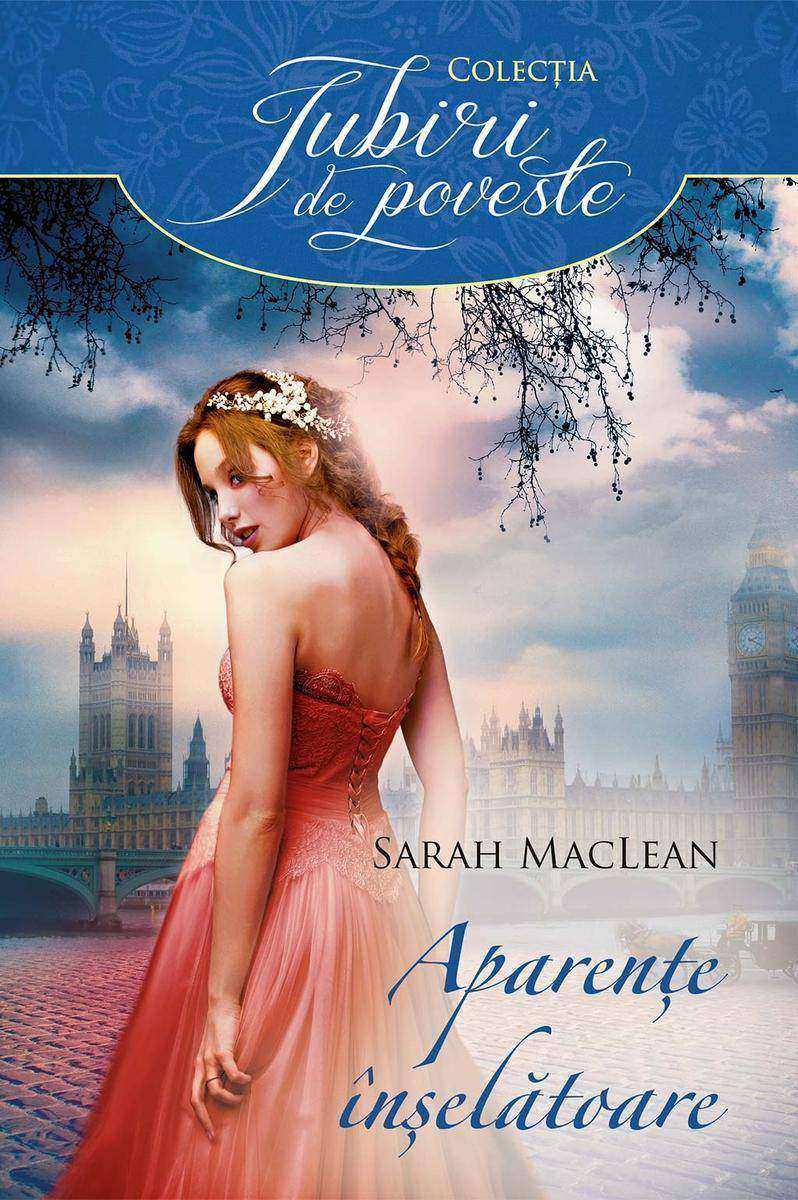
Aparen?e ?n?el?toare
¥7.36
P?n? ?i cea mai puternic? femeie din Anglia are un punct slab… Pentru ?nalta societate, este doar Lady Georgiana, sora unui duce, cu reputa?ia distrus? ?n urma celui mai groaznic scandal posibil, ?nainte de debutul ?n primul ei sezon. Dar adev?rul este mult mai ?ocant – ?n lumea ?ntunecat? a jocurilor de noroc din Londra, ea este enigmaticul Chase, unul dintre fondatorii ?ngerului C?zut, cel mai vestit cazinou din ora?. Ani la r?nd, a r?mas un mister pentru toat? lumea ?i niciodat? nu i-a fost descoperit? dubla identitate… p?n? acum. Sclipitor, tenace, tulbur?tor de chipe?, Duncan West este intrigat de frumoasa femeie cu reputa?ia p?tat? care are leg?turi de ne?n?eles cu aceast? lume a promiscuit??ii ?i p?catului. ?tie c? ea este mai mult dec?t pare ?i jur? s? descopere secretele Georgianei, dezv?luindu-i trecutul, amenin??ndu-i prezentul ?i pun?nd ?n pericol tot ce are mai drag… inclusiv inima ei. ?Aparen?e ?n?el?toare“ ?ncheie incredibila serie a lui Sarah MacLean, aflat? pe lista de bestselleruri din The New York Times, spun?nd povestea ultimului dintre fondatorii clubului ??ngerul C?zut“.
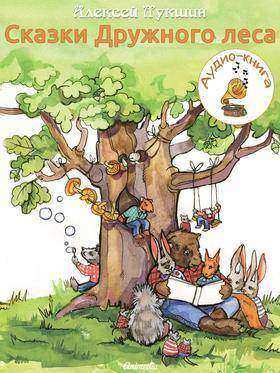
Сказки Дружного леса (аудио-книга): Иллюстрированное издание
¥22.81
Представляем вам сборник сказок для детей, сочетающий в себе как традиционное (увлекательный текст и красочные иллюстрации), так и современное мультимедийное содержание. В книге собраны десять поучительных и волшебных историй о приключениях жителей Дружного леса, прочитанных великолепным голосовым актером Александром Водяным. Главной задачей автора при написании этой книги было научить детей дружбе, гуманному отношению друг к другу, умению создавать хорошее настроение себе и окружающим. И все это без лишнего морализаторства. Каждая сказка — это короткая и смешная история. Книга будет интересна и взрослым читателям, которые с ее помощью смогут вернуться в мир детства, из которого мы все вышли. Издательство Animedia Company желает вам приятного чтения.
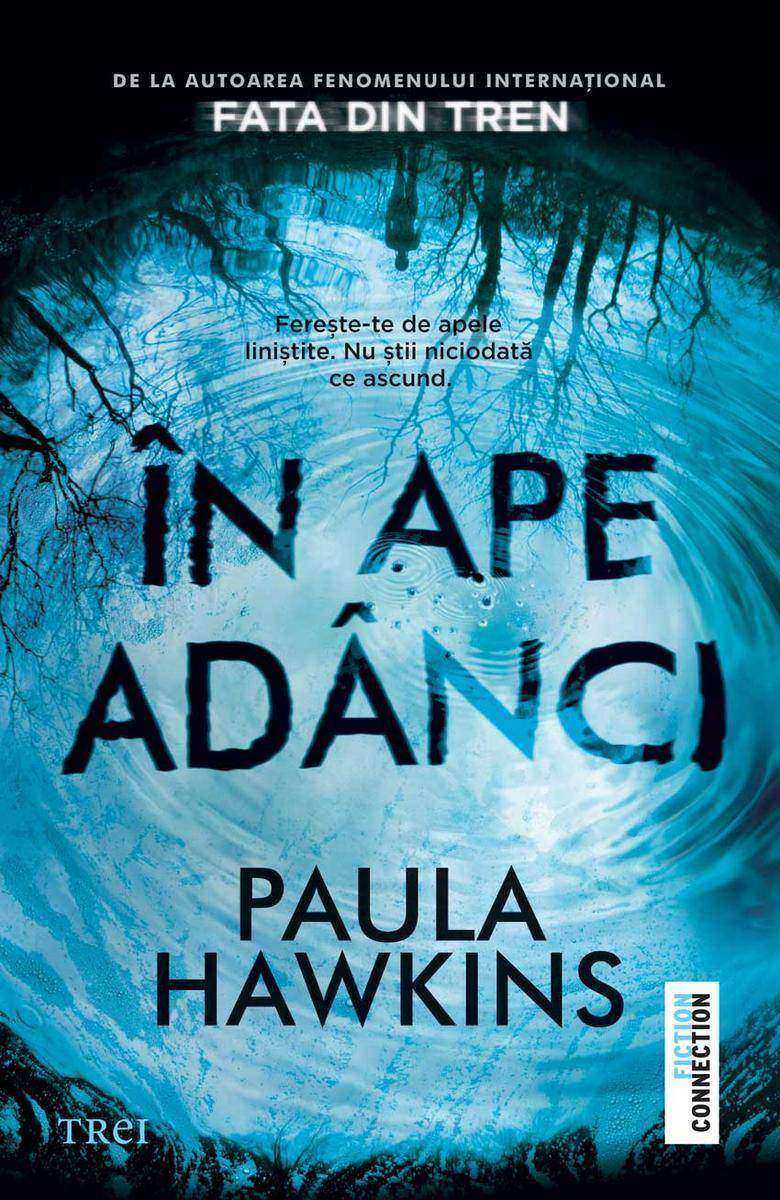
?n ape ad?nci
¥81.67
Nel Abbott este moart?. E ultima dintr-un lung ?ir de femei ?nghi?ite de apele ?ntunecate ale r?ului.Sora ei, Jules, e m?cinat? de regretul c? i-a ignorat strig?tul de ajutor ?i are certitudinea c? Nel nu s-a sinucis. Fere?te-te de apele lini?tite. Nu ?tii niciodat? ce ascund."Te ?ntrebi dac? ?n ape ad?nci poate fi la fel de bun ca Fata din tren? E ?i mai bun. O capodoper?." - Clare Mackintosh, autoarea bestsellerului Te las s? pleci Paula Hawkins vine cu un thriller alert, provocator, ce analizeaz? caracterul iluzoriu al emo?iei ?i al amintirii, precum ?i modul tulbur?tor ?n care trecutul se poate insinua ?n prezent.Fiindc? a?a ?ncepe: cu ?notul vr?jitoarelor – proba de ap?. Acolo, la bulboana mea, ?n acel lini?tit col? de paradis aflat la mai pu?in de o mil? de unde sunt ?n clipa asta, aici le aduceau, le legau ?i le aruncau ?n r?u, ca s? se scufunde sau s? ?noate.Se spune c? femeile au l?sat ceva din ele ?n ap?, se spune c? apa p?streaz? ceva din puterile lor, fiindc? de atunci, le-a atras spre ??rmurile sale pe cele f?r? noroc, pe cele disperate, pe nefericite, pe r?t?cite. Vin aici ca s? ?noate cu surorile lor."?

Az utolsó kívánság
¥57.80
Keacute s?bb azt beszeacute lteacutek, a feacuterfi eacuteszakr oacutel eacute;rkezett, a Koumlt eacutelver?k kapujaacuten keresztuumll. Baacuter nem volt id?s, a haja szinte teljesen feheacute;r volt. Amikor levetette kouml peny eacutet, kideruumllt, hogy a vaacutell aacuten egy sziacutejon kard fuumlgg. Nem volt ebben semmi szokatlan, Vizimaacuteban szinte mindenki fegyverrel jaacutert, de azeacutert senki sem hordott pallost a haacutet aacuten mint valami iacutejat vagy tegezt. A feheacuter hajuacutet a kiraacutelyi felhiacutevaacutes vezette a vaacuterosba a Vizima lakosait gyoumltr? striga visszavaacuteltoztataacutesaacute eacutert jaacute roacute haacute romezer oren jutalom.

1984
¥40.79
In 1984, London is a grim city where Big Brother is always watching you, and Thought Police can practically read your mind. Winston is a man in grave danger for the simple reason that his memory still functions. Drawn into a forbidden love affair, Winston finds the courage to join a secret revolutionary organization called The Brotherhood, dedicated to the destruction of the Party. Together, with his beloved Julia, he hazards life in a deadly match against the powers that be.

Hogyan készíts eredményes Facebook hirdetéseket?
¥143.72
Fent van a ce?ged a Facebookon, de nem jo?nnek az eredme?nyek? Hirdetsz, de nem vagy ele?g sikeres? Szeretne?d felpo?rgetni?a Facebook-hirdete?seid hate?konysa?ga?t? A Facebook egy nagyon o?sszetett hirdete?si rendszer. To?bb, mint 500 fe?le hirdete?sce?lza?si bea?lli?ta?s, valamint 15 hirdete?sle?trehoza?si leheto?se?g a?ll rendelkeze?su?nkre. Nem ko?nnyu? eldo?nteni melyiket haszna?ljuk, hiszen gyakran csak apro? ku?lo?nbse?gek va?lasztja?k el o?ket egyma?sto?l.?Ra?ada?sul sokszor a siker nem is a technikai tuda?son mu?lik, hanem azon,?hogyan e?pu?l be a marketing folyamatok ko?ze? ez az eszko?z. Erro?l szo?l ez a ko?nyv.A segi?tse?ge?vel nem csak a hirdete?si rendszer tru?kkjeit ismered meg, hanem azokat a mo?dszereket, strate?gia?kat, amik tu?lmutatnak a Facebookon, e?s amik ta?mogatnak abban, hogy me?g eredme?nyesebbe? tedd az online marketingedet. "Atto?l tartok a Ricsi tu?l?sok informa?cio?t?i?rt bele a ko?nyvbe, eze?rt az emberek nem fognak jelentkezni a ke?pze?seire. Aki elolvassa, le?trehozhatja?vagy jelento?sen javi?thatja a saja?t social marketing strate?gia?ja?t. E?n ma?r megtettem!” Damjanovich Nebojsa, senpai.hu ?Ma ma?r egyre nehe- zebb sze?les ko?rnek organikusan eljuttatni egy-egy posztot, eze?rt hirdete?sekre van szu?kse?g. Me?gpedig jo?l megtervezett Facebook-hirdete?sekre. Ezt ja?rja ko?ru?l Richa?rd alapossa?ggal e?s folyamatszemle?lettel, ugyanakkor ko?nnyed sti?lusban. Ko?nyve a Budapesti Metropolitan Egyetem digita?lis marketing executive MBA ke?pze?se?n is fontos alapirodalom lesz.”Dr. Papp-Va?ry A?rpa?d, a Budapesti Metropolitan Egyetem a?ltala?nos rektorhelyettese, a ?ma?rkadoktor” ?Le?vai Ricsi megmutatja, hogyan kell meg fogni e?s nem ereszteni a vevo?idet, aka?r itthoni, aka?r ku?lfo?ldi piacra ce?lzol. E?s Ricsi bo?kezu? az informa?cio?val, hiszen Magyarorsza?gon o? publika?l a legto?bbet Facebook-marketingro?l. E?s ha annyi mindent megoszt ingyen, ke?pzeld, milyen titkokat tartogat Neked a ko?nyve?ben! Szo?val, u?j vevo?k, nagy te?telben, diszkont a?ron – e?rdekel?”Wolf Ga?bor, Marketing Commando U?gy e?rzed, itt az ideje, hogy a Facebook-hirdete?seid igaza?n eredme?nyesek legyenek?Ez a ko?nyv ebben segi?t. Fordi?tsd a saja?t ce?ged java?ra a benne rejlo? informa?cio?kat!
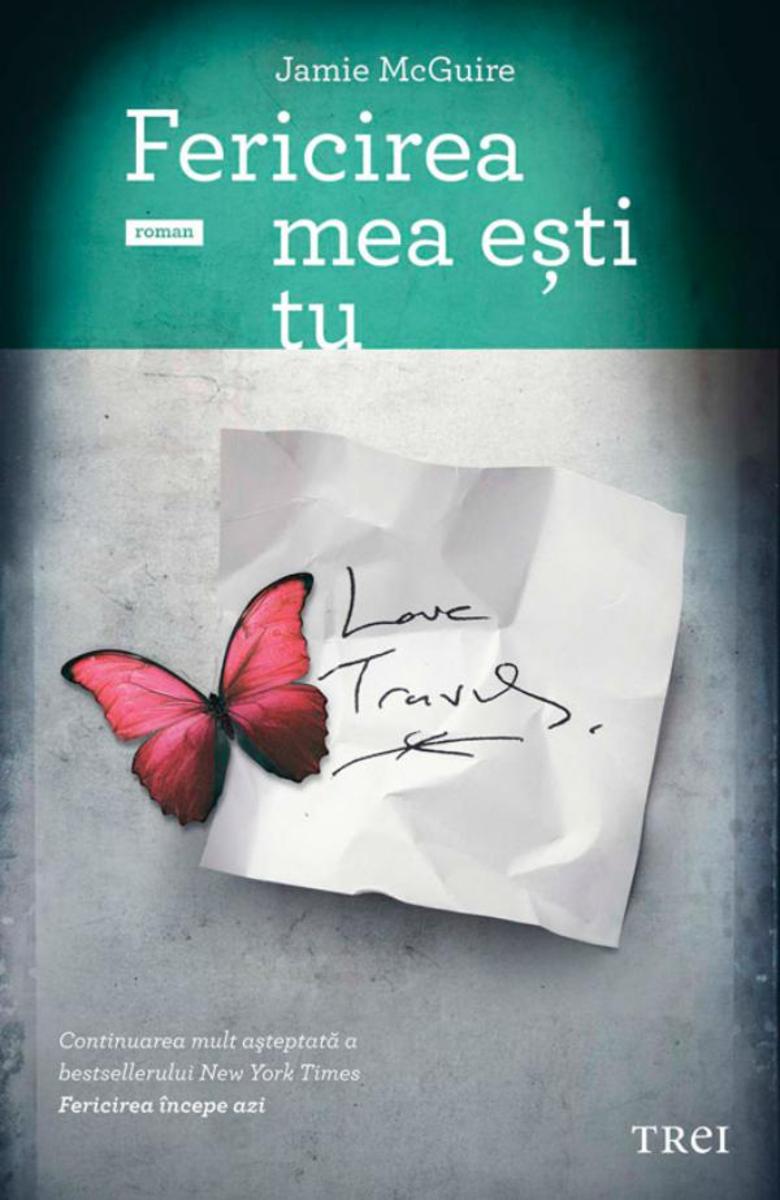
Fericirea mea e?ti tu
¥81.67
Continuarea mult a?teptat? a bestsellerului Fericirea ?ncepe aziAfl? ce este ?n mintea b?rba?ilor!Travis Maddox a ?nv??at dou? lucruri de la mama sa ?nainte ca aceasta s? moar?: Iube?te mult. Lupt? ?i mai mult pentru iubirea ta.?n Fericirea mea e?ti tu, via?a lui Travis e plin? de femei care vin ?i pleac?, de jocuri de noroc ilicite ?i de violen??. ?ns? tocmai c?nd Travis se consider? invincibil, Abby Abernathy ?l pune la p?m?nt.Fiecare poveste are dou? versiuni. ?n Fericirea ?ncepe azi, Abby vorbe?te ?n numele ei. Acum e timpul s? citim povestea prin ochii lui Travis.?Travis e un tip impulsiv. ?ncerc?nd s? scriu din punctul lui de vedere, am ?tiut c? nu puteam s? spun povestea din nou, pur ?i simplu. Mi-am ?ndreptat aten?ia asupra perioadei c?nd Abby ?i Travis nu erau ?mpreun?, pentru ca romanul s? aduc? lucruri noi ?i am sentimentul c? am reu?it s? fac ce mi-am propus.“ – Jamie Mcguire?Fericirea mea e?ti tu are avantajul c? vine dup? o poveste emo?ionant?, pe care o completeaz?, ?i c? are un epilog ingenios, ce surprinde un instantaneu din via?a lui Travis ?i a lui Abby ?n viitor.“ – Reading, Eating Dreaming?Travis Maddox continu? s? lupte pentru ceea ce iube?te. Ce ?i-ai putea dori mai mult de la un b?rbat?“ – Bookwhisperer Reviews?Am f?cut o adev?rat? pasiune pentru personajele acestui roman.“ – The Daily Quirk

Chimista
¥106.19
De la autoarea seriei AMURG, bestseller New York Times A fost ?arma" secret? a uneia dintre agen?iile-fantom? ale guvernului american. C?nd a devenit incomod?, au decis s? o lichideze. Ca s? r?m?n? ?n via??, s-a transformat ?ntr-un cameleon care jongleaz? cu identit??ile ?i adresele. L-au ucis pe singurul om ?n care avea ?ncredere, ?ns? ea reprezint? ?n continuare o amenin?are. Vor s-o vad? moart?, ?i asta c?t mai repede. C?nd fostul ?ef ?i ofer? o cale de ie?ire, realizeaz? c? ar fi singura ?ans? de a-?i reinventa destinul. Dar pentru asta va trebui s? accepte o ultim? misiune. Constat? ?ns? c? informa?iile pe care le ob?ine o pun ?ntr-o situa?ie ?i mai primejdioas?. Hot?r?t? s? ?nfrunte direct amenin?area, se preg?te?te pentru cea mai dificil? lupt? din via?a ei, dar se ?ndr?goste?te de un b?rbat. Noua pasiune nu poate dec?t s?-i mic?oreze ?ansele de supravie?uire. Aflat? ?n impas, ??i valorific? talentele unice ?n feluri pe care nu ?i le-a imaginat niciodat?. ?n acest roman cu o intrig? bine ?ncheiat?, Stephenie Meyer creeaz? o nou? eroin? aprig? ?i fascinant?, cu abilit??i ie?ite din comun. Ne arat? ?nc? o dat? de ce este una dintre cele mai bine v?ndute autoare din lume. ?Felul cum Meyer gestioneaz? curiozitatea cititorului, ?ntre?in?nd ?i control?nd fluxul informa?iilor, demonstreaz? o m?iestrie de virtuoz… Oamenii nu vor doar s? citeasc? romanele lui Meyer; ei vor s? p?trund? ?n interiorul lor ?i s? tr?iasc? acolo." — Lev Grossman, Time ?Meyer scrie cu o claritate luminoas?, f?r? s? se interpun? nicio clip? ?ntre cititor ?i ceea ce ??i imagineaz? acesta. Originalitatea ei este incontestabil?." — Orson Scott Card, autorul seriei Jocul lui Ender ?Meyer este mai interesat? de rela?ii dec?t de conven?iile superficiale ale genului… Lec?ia ei de via?? pozitiv? este dezarmant?." — Jeff Giles,Entertainment Weekly ?Nu cite?ti un roman de Stephenie Meyer, ci ?l tr?ie?ti, al?turi de personajele vii ?i conving?toare pe care le-a creat. Meyer are modul s?u special de a-l implica pe cititor ?n via?a personajelor ei." — Ridley Pearson, autorul bestsellerului White Bone

Zilele aman?ilor
¥53.33
C?nd am primit invita?ia de a citi manuscrisul c?r?ii Corinei, am acceptat tem?tor. Sunt la o v?rst? c?nd ??i spui arogant c? ai citit cam tot ?i te ?ntrebi seniorial ce ar putea s? te mai surprind?. Ei bine, cartea Corinei. Care te surprinde prin toate locurile pe care le credeai securizate, impenetrabile. Te surprinde ?n primul r?nd pentru faptul c? refuz? f?r? efort scriitura feminin?, melancolic? ?i vag lamentabil?. Frazele sunt scurte ?i nu intr? b?t?nd la u??, ci tr?ntind-o de perete. Apoi, te surprinde tema predilect? a c?r?ii: amantl?curile, iubirile frugale, rela?iile interzise, tot tac?mul. Practic, Corina omoar? ?n pove?tile ei orice ipocrizie feminist? (chestie care mie mi-a mers la suflet), o ?ngroap? ad?nc ?i ?i pune capac. N-o s? omit sub nicio form? limbajul, care surprinde de asemenea. Corina folose?te limba rom?n? f?r? s? se fereasc? de extremele ei. Are curaj, ?are ou?“, cum s-ar spune. Nu c? ar fi singura, nu c? ar fi o raritate, dar a manipula cuvinte interzise ?ntr-un text literar, f?r? a-i strica savoarea, nu e la ?ndem?na oricui. R?m?ne ?ns? la final impresia general?, cea care conteaz? cel mai mult. Care e bun?, dac? nu foarte bun?. Cartea se cite?te u?or, e cinic?, e vie, are tot ce ?i trebuie pentru a deveni un succes. (?tefan Caraman)Corina Ozon vine dinspre jurnalism spre literatur?, cunosc?nd oamenii, cu talent. Scrie captivant, folosind ?n fraze c?te cuvinte chiar trebuie, f?r? floricele stilistice ?i volute descriptive ?n plus, care ar cre?te statistic durata de somn a popula?iei. ?Zilele aman?ilor“ e o carte pentru dezinhiba?i. N-o recomand pro?tilor si bigo?ilor. (Alexandru Petria)Aceasta este o carte de?teapt?. Iar vr?jitoria nu-i deloc exclus?. Te ?ine lipit de ea, nu te las? absolut deloc nici s? faci altceva ?i nici m?car s? te g?nde?ti la altceva. Nu po?i uza de niciun instrument fizic ori sufletesc pentru a i te sustrage. Iar dac? asta nu-i curat? fermec?tur?, atunci ce este? A, ?tiu. Literatur? de?teapt?. (Ana Barton)O lectur? care curge u?or, cu un limbaj direct ?i frust, perfect adaptat subiectului. Corina vorbe?te cu umor ?i amar, f?r? ocoli?uri, despre situa?ii de via?? verosimile, desprinse din cotidian. Aman?ii putem fi oricare dintre noi. (Petronela Rotar)

Em busca de prazer
¥8.18
Um homem de meia idade cansado de se satisfazer com a m?o sai de casa e vai para o bairro de Itatinga em busca de uma garota de programa e lá recebe algo que nunca recebeu na vida.

Хроники Атлантиды. Книга первая - Фантастика. Роман
¥22.81
По причине колонизации планеты Доринго оккупационными силами принц Энилот Атлантис с горсткой приближенных вынужден навсегда покинуть свою родину. Найдя пристанище на задворках галактики, на планете под названием Земля, он основывает новую цивилизацию, имя которой Атлантида. Но судьба играет с ним по своим правилам, и, сам того не подозревая, Атлантис становится пешкой в большой политической игре, которая длится уже миллионы лет. Молодой американец по имени Моузли Гук случайно находит древние артефакты, оказавшиеся архивными документами атлантов, и раскрывает всему миру правду о легендарном острове Атлантида, который вот уже несколько тысяч лет будоражит умы человечества. Издательство Animedia Company желает вам приятного чтения.

Вдох-выдох:Сборник рассказов
¥15.18
Вдох-выдох — это второй сборник рассказов Ирены Яновой. Первый сборник,Магические книги Невилов, вышел под псевдонимом Ирина Иванова в 2014 году. Знаете ли вы, кто такие энергетические вампиры и что они делают с накопленной энергией В рассказе Вдох-выдох, который дал название сборнику, автор предложила свою версию жизни такого человека. Рассказ Посылка поведает вам о том, что судьбу иногда определяет случай, а 23 реальность о любви. Причем о любви в другой реальности, где ты проживаешь иную жизнь, с другим человеком, с другой любовью. Эхо вселенной — лирический рассказ о космосе и о зарождении чувства на громадном расстоянии. Как помочь девушке, если знаешь, что с ней может приключиться беда Необычный герой, необычный способ помощи и судьба, которая не оставляет влюбленных. А что может произойти, если ваше сознание случайно осталось в вашем клоне Рассказ Человек, которого нет раскроет возможный вариант развития событий. Издательство Animedia Company желает вам приятного чтения.
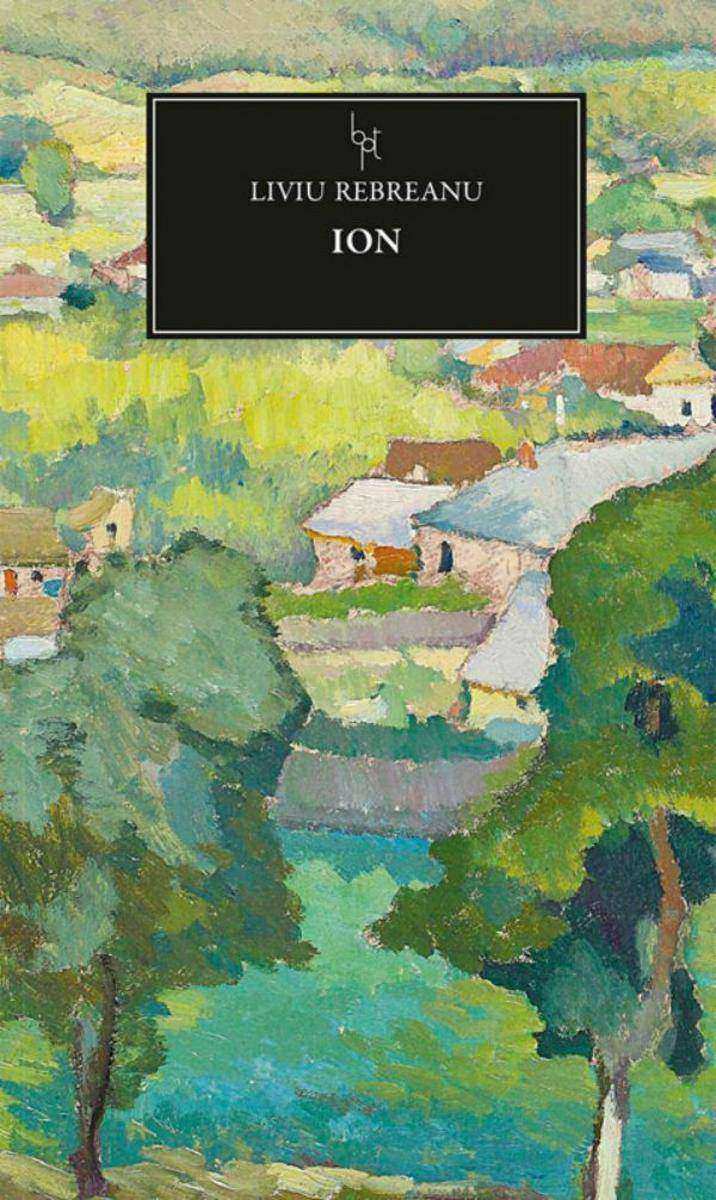
Ion
¥0.01
este primul roman obiectiv din literatura rom?n?, fiind ap?rut ?n anul 1920, dup? o lung? perioad? de elaborare, a?a cum ?nsu?i autorul men?ioneaz? ?n finalul operei, ?ntre martie 1913 – iulie 1920. Apari?ia romanului a st?rnit un adev?rat entuziasm ?n epoc?, mai ales c? nimic din crea?ia nuvelistic? de p?n? atunci nu anun?a aceast? evolu?ie spectaculoas?: ?Nimic din ce e publicat ?nainte nu ne putea face s? prevedem admirabila dezvoltare a unui scriitor, care a ?nceput ?i a continuat vreo zece ani, nu numai f?r? str?lucire, dar ?i f?r? indica?ii de viitor“, nota Eugen Lovinescu. Criticul prime?te romanul Ion ca pe o izb?nd? a literaturii rom?ne, iar satisfac?ia sa este consemnat? ?n studiul ?Crea?ia obiectiv?. Liviu Rebreanu: Ion“. Pentru ini?iatorul modernismului rom?nesc, al c?rui principiu de baz? era sincronismul literaturii rom?ne cu cea european?, romanul Ion este cel care ?rezolv? o problem? ?i curm? o controvers?“. Aceast? afirma?ie a lui Lovinescu se refer? la faptul c? apari?ia primului roman obiectiv direc?ioneaz? literatura rom?n? c?tre valoare european? ?i stinge polemica pe care criticul o avea cu s?m?n?tori?tii epocii.

Függ?ségben 1
¥0.01
Nathaniel Cruz már akkor belebolondult Alexis Woodville-be, amikor a lány a gimnáziumban egy szerencsétlen baleset folytán, fejen találta ?t egy focilabdával. A cserfes és csábos, v?r?s hajú lány szó szerint levette a fiút lábáról. Egyikük sem sejtette, hogy a spontán vonzalom életre szóló bilincset tesz majd a szívükre, de katasztrofális id?zítés és egy buta véletlen hosszú id?re elszakítja ?ket egymástól. ?vekkel kés?bb Nathaniel már a világhír? futballsztár csillogónak látszó életét éli, szívében azonban még mindig megszállottja Alexisnek. Véletlen találkozásukkor felszínre t?rnek a régóta eltitkolt vágyak, ám hiába tombol k?z?ttük a szenvedély, a féltékenység és birtokolni vágyás megint szétválasztja ?ket. Amikor útjaik kés?bb újra keresztezik egymást, hatalmas dilemma el?tt állnak. K?vetve a szívük vágyát, megadják-e magukat az oly régóta elnyomott szenvedélynek, vagy feláldozzák a szerelmet a felel?sségtudat oltárán. Ez Alexis és Nathaniel érzéki, szenvedélyes t?rténete. Remélem, annyira élvezitek majd olvasni, mint amennyire én az írást élveztem!

O dem?nio do armário
¥7.63
Um pai de família compra uma casa sem desconfiar de que há um terrível dem?nio no armário embutido de um dos quartos. batutaribeiro.com.br

Точка возврата - Женский любовный роман
¥38.07
Спустя три года после смерти мужа Женя так и не сумела обрести вкус к жизни. Она растит сына, терпит капризы матери, тянет лямку на работе в отделе кадров фарфорового завода. Евгений Халтурин, столичный кризисный менеджер, приезжает, чтобы запустить процедуру банкротства завода. Молодой, амбициозный и деятельный начальник раздражает Женю, и она высказывает негативное мнение о предстоящем банкротстве… Халтурин начинает размышлять о словах невзрачной кадровички, понимая, что хочет обязательно сделать ее своей союзницей. Но зачем? Женя разительно отличается от тех уверенных в себе элегантных светских женщин, которые привлекают его… Издательство Animedia Company желает вам приятного чтения.

Emerson’s Story: (Creepy Hollow Books 7, 8 & 9)
¥81.67
Nearly eighteen years after the events of A Faerie’s Curse, a thrilling new adventure begins ... Emerson Clarke: Sarcastic. Independent. Possibly losing her mind Because that’s the only explanation for why she occasionally sees things that aren’t there, right? But one night, an impossible power erupts from her, and Em realizes the truth is crazier than she ever thought: she isn’t losing her mind she’s magical. Thrown into an entirely new world of faeries, enchantments—and the annoying guy from down the road who, it turns out, isn’t human either—Em barely has time to learn even the most basic of magic before another startling truth reveals itself: she has a Griffin Ability. A special kind of magic feared by fae. Now she’s at the top of everyone’s most-wanted list—including the mysterious glass faerie carrying out random attacks on fae. In this magical and terrifying world that she’s entirely unprepared for, Em must try to figure out who she really is, whom to trust, and how to stay alive long enough to get back to her normal life. Meet a new heroine and catch up with old favorite characters in this thrilling adventure packed with enchanting magic, unexpected twists, and a dash of romance. Includes the following THREE Creepy Hollow books: Rebel Faerie THE COMPLETE CREEPY HOLLOW SERIES CONSISTS OF THE FOLLOWING BOOKS: Violet's Story The Faerie Guardian The Faerie Prince The Faerie War Calla's Story A Faerie's Secret A Faerie's Revenge A Faerie's Curse Emerson's Story Glass Faerie Shadow Faerie Rebel Faerie

101 Piadas de loira
¥8.18
Quer se divertir e dar boas risadas? Curta esta sele??o com as melhores piadas de loira.

Divorturile amantilor
¥53.33
Volumul 4 din seria ?Aman?ilor” ?Sunt Corina Ozon, cea care a disecat sufletul ?i min?ile aman?ilor ?i ?i i-a pus pe tav?. Cea care a ?ncercat, cu asumarea tuturor riscurilor, s? te ?nve?e s? nu judeci, s? nu fii pref?cut ?i s? accep?i s? fii fericit. Ai fost ?ocat c?nd ai v?zut limbajul din Zilele aman?ilor, realismul din Nop?ile aman?ilor ?i actualitatea din Aman?ii 3.0. Ai r?s c?nd mi-ai citit c?r?ile, poate te-ai ?ntrebat c?t e experien?? de via?? ?i c?t fantezie. C?t este refulare ?i frustrare, ?i c?t adev?r. Stau ?ntr-un glob de cristal, pe care mul?i nu-l ating, de team? s? nu se sparg? ?i s? aib? mult de lucru dup? aceea. ?tii c?t curaj am, chiar nebunesc, iar cu nebunii s? nu te pui! Am spart bariere ?i ?i-am b?gat aman?ii ?n cas?, ?n sertarul de la birou, ?n avion sau metrou. Dac? ai avut ?i tu curajul s? cite?ti, e?ti la fel de nebun. Nebun de curajos, mai ales c? le-ai spus ?i altora s? citeasc?. Lumea e mai vie, am spart borcanul cu fluturi ?i alegem s? vorbim f?r? perdea, a?a cum e via?a. Povestea se scrie odat? cu tine, acum ?i aici, iar aventura continu?. Aman?ii, c`est moi!”

My Dilemma is You. Vol. 1
¥68.34
My dilemma... este senzaia internetului i a librriilor, deopotriv. Cititorii i fanii au nnebunit complet: nimic altceva nu mai exist.“ – La RepubblicaCristina Evans triete la Los Angeles i crede c are o via perfect, pn n ziua n care prinii ei hotrsc s se mute la Miami. Totul se nruie pentru adolescenta de aisprezece ani, care se vede obligat s-i prseasc prietenii dintotdeauna i s ia totul de la capt ntr-un alt ora, la o alt coal. Dei Los Angeles-ul i cei mai buni prieteni de acolo rmn permanent n gndurile ei, Cristina reuete foarte repede s se acomodeze n noua cas i s se mprieteneasc cu civa dintre cei mai populari elevi ai liceului. Toi o primesc n cercul lor, mai puin Cameron i Susan, iubita lui, care o privesc amndoi cu ostilitate. i astfel, printre tot felul de ntmplri mai mult sau mai puin plcute, Cris reuete s-i fac o nou prieten, Sam, i se ndrgostete de Matt. Dei lucrurile par s mearg din ce n ce mai bine n viaa ei, iele inimii ajung s se ncurce tot mai mult cnd Cris i Cameron ncep s-i dea seama c antipatia pe care o simt unul fa de cellalt ascunde, n realitate, un sentiment complet diferit. Vor accepta oare cei doi tineri s priveasc n fa aceast descoperire i s lupte pentru a fi mpreun




 购物车
购物车 个人中心
个人中心



